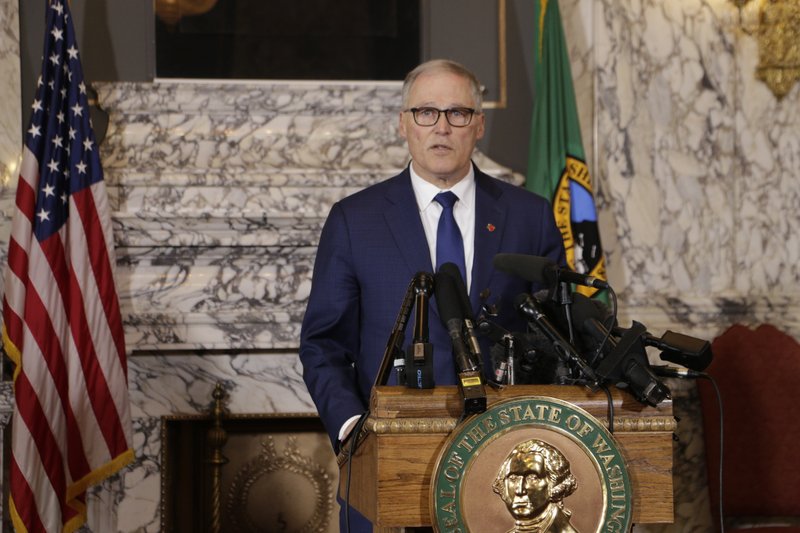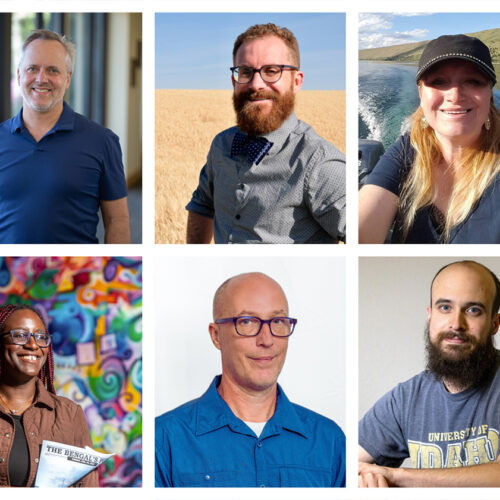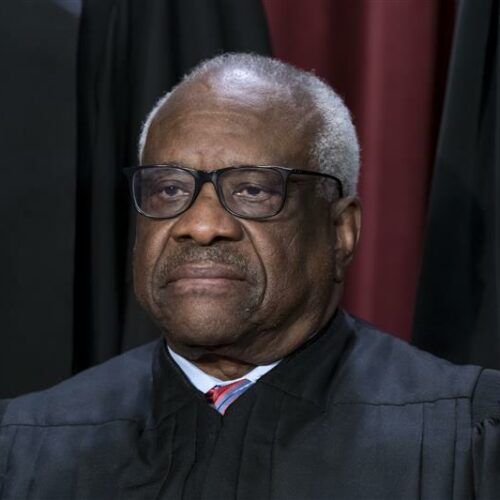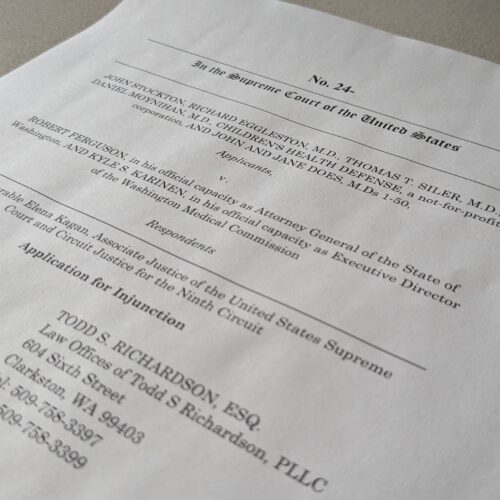
No Shelter-In-Place Order Imminent In Washington, But More Restrictions Likely In Future
READ ON
BY AUSTIN JENKINS & TOM BANSE
Updated March 20, 2020, 8:30 p.m. PT
Washington Gov. Jay Inslee said he wants to avoid imposing a statewide shelter-in-place order, as governors in California and elsewhere have done recently. But he said this will necessitate further voluntary reductions in social interactions by Washingtonians.
The Democratic governor used an unusually stern tone in a media briefing from his office at the state Capitol late Friday, saying “some progress” has been made to slow the coronavirus outbreak, but that “we have not done enough.”
Inslee spoke a few hours after the Washington State Department of Health reported the number of patients testing positive with the new coronavirus in the state rose above 1,500, of whom 83 have now died. He indicated previous emergency orders — including to limit the size of gatherings and close schools, bars and restaurants – may not be enough.
“We still are seeing people behaving as if this virus was not a mortal threat to people in this state,” Inslee said.
The governor said he was troubled to hear about packs of teenagers hanging out, dinner parties carrying on and restaurant takeout customers lingering at counters. He pointed to a chart of highway traffic around the state that showed a sharp drop in the Seattle area, but much less elsewhere.
“If we’re not cutting the mustard, there could be further orders coming that do have both stronger scope and more enforcement behind them,” Inslee warned.
Earlier on Friday, the governor’s Chief of Staff David Postman emphasized the governor has other tools at his disposal besides shelter-in-place. Examples could include telling workplaces they can’t have more than 50 percent of their employees in the building at one time, ending takeout food orders, imposing a curfew and closing stores for certain hours. The most extreme tool would be to seal off an area with a high concentration of people infected with COVID-19 – what’s known as a cordon sanitaire.
Postman also acknowledged the possibility that a six-week closure of all schools statewide could be extended.
“It’s certainly possible it could be the rest of the year,” Postman said. “We just don’t know.”
A shelter-in-place order, also described as a stay-at-home order, can vary from state to state and include exemptions. For instance, Gov. Andrew Cuomo of New York has ordered all workers, except those deemed essential, to stay home. But, as in Washington, grocery stores and pharmacies will remain open. In California, where Gov. Gavin Newsom issued a shelter-in-place order on Thursday, he made clear that people don’t actually have to stay in their homes.
Emergencies are scary enough. Let’s not add to the fear by spreading misinformation. @WANationalGuard is your neighbor, your friend and we want what’s best for our communities – we live here too. Let’s put aside the rumors about martial law or military rule. IT’S JUST NOT TRUE.
— WA National Guard (@WANationalGuard) March 20, 2020
“You can still take your kids outside, practicing common sense and social distancing. You can still walk your dog,” Newsom said, according to KQED.
Decisions to impose emergency orders, Postman said, are made in consultation with the state’s adjutant general, the director of emergency management, public health officials, lawyers and others. He said the discussion begins with a question: what data do we have?
For instance, Inslee’s decision last Sunday night to close bars, restaurants and other gathering spots was based in part on an uptick in emergency room visits by people exhibiting COVID-19 type symptoms.
Besides ER visits, the experts look at traffic volumes – an indicator of whether people are heeding advice to stay home – epidemiological data and trend lines, like percent of positive COVID-19 tests that are coming back.
Postman added that any emergency order must be “enforceable and effective.” He said Inslee is concerned by reports that some businesses and groups are flouting previous emergency orders. He gave the example of a restaurant allowing someone to order a beer at the bar while they waited for their take-out order and people recreating in a way that makes social distancing impossible.
“Everyone needs to change their behavior, change the way we live temporarily if we are going to prevent significant loss of life,” Inslee said in an appeal to the state’s residents. “When I say everyone, I mean frankly everyone, because we all are potential transmitters of this virus and we are all to some varying degree are potential victims of this virus.”
Access to testing for coronavirus has been an issue in Washington and nationally. But Postman said on Friday that progress is being made and that he’s had conversations with federal officials and large drug store chains about opening drive-up testing locations. “They should be popping up soon,” Postman said.
Regarding calls from advocacy groups to release some prison inmates early to reduce the risk of a COVID-19 outbreak in a prison, Postman said no decisions are imminent.
“We continue to look at it, it’s a difficult one,” he said.
Asked when the governor’s emergency orders might start to be lifted, Postman said there had not been a lot of discussion about that yet.
“I think it’s going to be a really hard decision,” he said.
Related Stories:

COVID-19, 5 years later: Reflections on the scars we carry, and resilience in unprecedented times
NWPB caught up with local residents and doctors to talk about how they’ve moved forward following the COVID-19 pandemic. They spoke about how the experience changed them and wisdom they’ve gleaned along the way. These are their reflections.

US Supreme Court will consider petition for stay in COVID-19 free speech case
The U.S. Supreme Court will review an application for a stay in a federal lawsuit involving local retired eye doctor Richard Eggleston.

Group representing retired Clarkston ophthalmologist asks US Supreme Court for injunctive relief
A retired Clarkston eye doctor is part of a group asking the U-S Supreme Court to grant an injunction in a lawsuit against Washington state officials.















